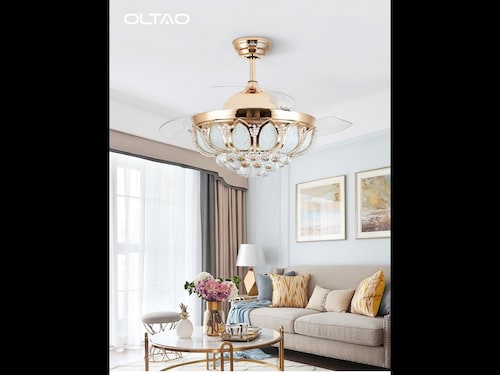Green packaging, real-world math: How Oltao is making sustainability a daily pra
An inside view of an industry quietly being reshaped by a ceiling fan company's packaging change; why smaller changes with quantifiable impacts matter so much now


Other industries misuse sustainability these days it is a word that floats freely around, often without a tangible goal in mind. But with Oltao, an upmarket Indian ceiling fan brand, a commitment to go green was much too important to be confined to words. Their last-green decision to shift packaging from thermocol to moulded pulp provides a fertile ground to study what concrete progress in environmentalism could really mean-worked out technically and numerically.
Oltao decided to evaluate the packaging impact of its most popular product-a 52-inch designer ceiling fan-with a life-cycle analysis instrument. At first, it looked like the move might be one of compromises. Moulded pulp packaging probably did something worse by weighing the package seven percent more than the thermocol counterpart. But the numbers came, and another story was told.
Although weight went up, total carbon emissions per shipped fan went down by eleven percent. This came mainly because the moulded pulp was biodegradable and recyclable as opposed to the EPS being non-biodegradable. Far more impressive even was the ninety-eight percent reduction in landfill volume. The cardboard comes from a plant located only about two hundred and fifty kilometers away, and it will enter the paper recycling stream in Rajasthan within six weeks. These changes taken individually may seem insignificant, but they are the beginnings of a quiet and measurable, scalable evolution.
Notwithstanding this being a small shift from Oltao"s perspective, it does show how these small changes within manufacturing industries could cause ripple effects. Once the brand proves that they are willing and able to do eco-friendly work, and that they are efficient at it, other brands follow suit. There are over twenty manufacturers of fans in India that still use imported EPS inserts-unless all of them start following Oltao’s footsteps, the huge emission and waste reduction potential would certainly mark a significant advancement for the entire industry.
The white-paper mentality does not end with Oltao’s packaging. The brand, well known for stylish ceiling fans, balances artful design with extreme efficiency. From minimalistic wooden-blade designs to glam chandelier fans whose wings retract, each product is engineered to serve a purpose. Oltao fans use brushless DC motors that can conserve as much as 70 percent energy compared to older versions they operate at very low noise levels and are built to last for quite a few years. A few models also give intelligent control options, enabling users to change settings remotely and even reverse airflow for different seasons.

Smart Design, Greener Packaging: Oltao Leads by Example
However, simplicity, comfort, and sustainability stand at the very foundation of Oltao design. From energy-saving features to eco-conscious materials, the brand is redefining what a contemporary ceiling fan can be. Product development focuses on how it is actually used and extends that practicality to packaging, logistics, and after-sales service.
The bigger lesson from Oltao’s packaging change is that sustainable manufacturing need not be dramatic to work well. Data-driven small decisions, like using a different material or reducing supply-chain length, can leave a great environmental legacy. Measured appropriately and well thought out, even the smallest of changes can bring a brighter clean future to an industry.
Oltao"s packaging shows that going green is not talk: it is forethought, real-world numbers, and the readiness to commit to the change when one cannot see the efficacy straight away. Oltao stands as a strong and straightforward model for other brands out there trying to reduce their footprint: measure what matters, make the change, and let the math speak for itself.
The pages slugged ‘Brand Connect’ are equivalent to advertisements and are not written and produced by Forbes India journalists.
First Published: Jul 29, 2025, 15:06
Subscribe Now